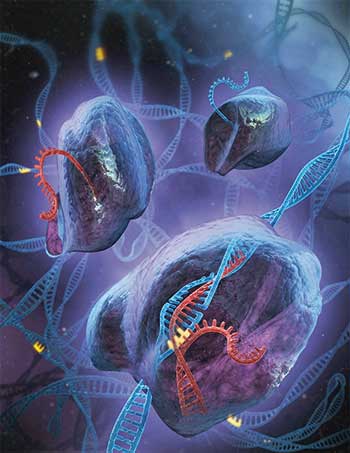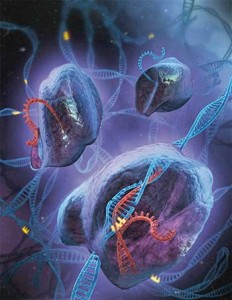CRISPR as a Recorder of Molecular Activity

 Researchers from Harvard University have succesfully proved that CRISPR can work as a recorder of molecular events. Synthetic DNA molecules introduced in bacteria over a defined timespan were integrated by the CRISPR/Cas system in DNA arrays in the exact same order of introduction. The results, published in the journal Science, pave the way for using CRISPR to elucidate the timeline of intracellular phenomena.
Researchers from Harvard University have succesfully proved that CRISPR can work as a recorder of molecular events. Synthetic DNA molecules introduced in bacteria over a defined timespan were integrated by the CRISPR/Cas system in DNA arrays in the exact same order of introduction. The results, published in the journal Science, pave the way for using CRISPR to elucidate the timeline of intracellular phenomena.
CRISPR/Cas is an immune system present in some prokaryotes. Proteins Cas1 and Cas2 cut the DNA of invading viruses and integrate parts of it in the CRISPR loci. These DNA arrays are a library of the infections the bacterium has suffered over time, and an acquired immunity system: if the same virus enters the cell again, RNA transcripts from the CRISPR loci will drive Cas endonuclease against the infectious agent.
A log to track gene expression
The team led by George M. Church decided to test the ability of the CRISPR arrays to store molecular events. In their proof of principle study, the researchers introduced synthetic DNA fragments in E. coli bacteria that possessed a CRISPR loci and a modified Cas system consisting of inducible Cas1 and Cas2 proteins. Sequencing of the CRISPR loci revealed that the fragments had been integrated in the exact same order they were introduced in the cell. This ordering reflects the timeline of intracellular molecular events, so Church and his collaborators argue that CRISPR could be used as a recording device of, for example, gene expression. By inverse transcription of the cellular mRNAs to DNA and their targeting by CRISPR/Cas, CRISPR loci sequences could reflect gene activation cascades.

